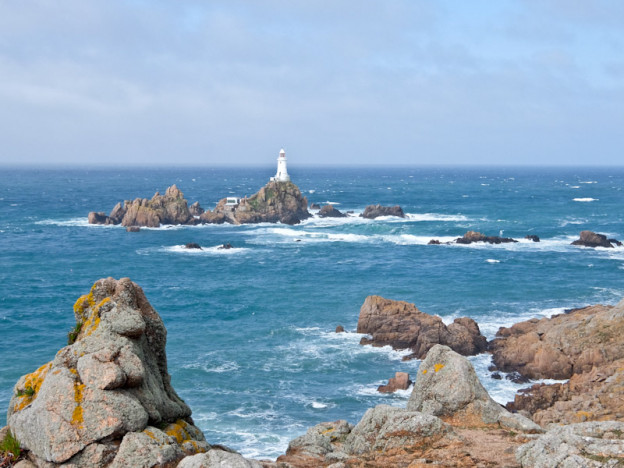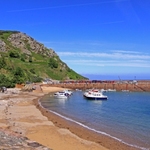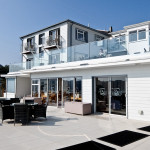Rupert Parker avoids travelling to the Channel islands by plane and instead takes a sustainable trip to Jersey.
My recent experience of flying short haul around Europe has been long delays, cancelled flights and masses of frustration. Faced with yet another flight, this time to Jersey, I decide to try the sustainable option. It’s fairly easy, a train to Poole, a short walk and then a four-hour Condor Ferry to St Helier. Of course, it takes longer than flying but it’s far more relaxing.
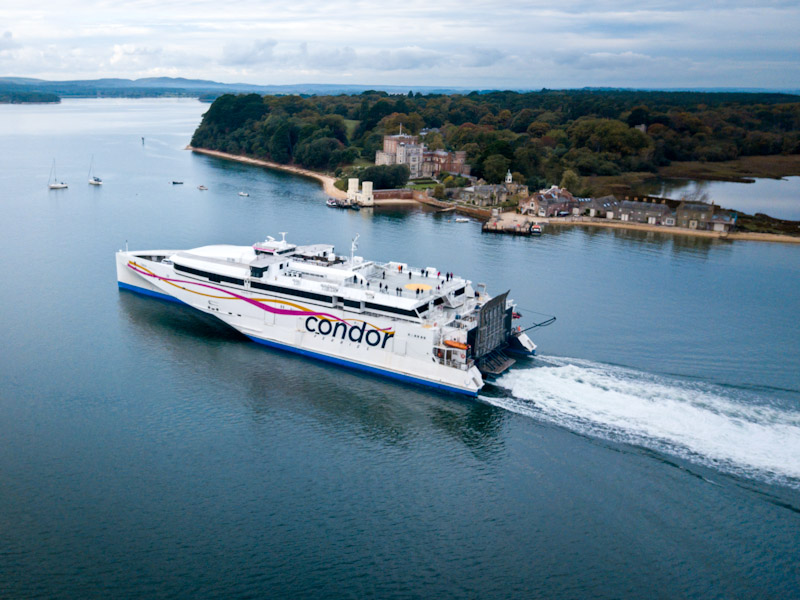
It’s not exactly a scenic voyage – during my ferry trip across the English Channel, I’m enveloped in thick fog for most of the way. However, as we pull into the docks in St. Helier it miraculously clears, and I can see why the island deserves its reputation as the sunniest place in Britain. I’m staying with the green theme and pick up an e-bike from the rental shop just by the docks, better to tackle those steep hills.
The largest of the Channel Islands, Jersey is a haven for cyclists seeking both natural beauty and sustainable travel options. One of the island’s unique features is its network of “Green Lanes,” designated for cyclists, walkers, and horse riders. They’re marked with special signage and are away from main roads, often following picturesque coastal paths and quiet countryside lanes.
The simple way of discovering the island for this sustainable trip to Jersey is to follow the coastline all the way around. Route 1 is well-signed and offers picturesque coastal landscapes, charming villages, and leafy lanes. I set out from St. Helier, in an anti-clockwise direction, cycling west along the bike path along the bay. So far it’s flat but at St Aubin, I climb uphill and follow an old railway track to the Corbiere Lighthouse.
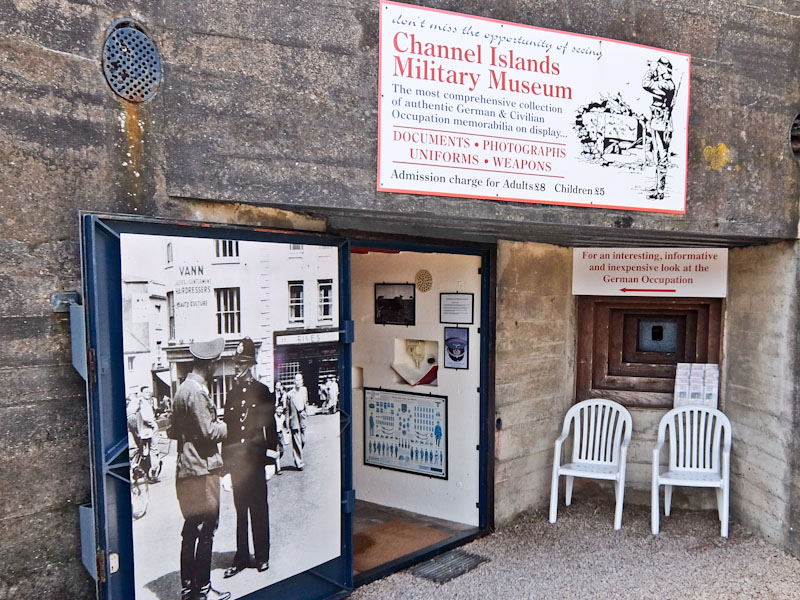
Here I turn the corner and head north along the flat expanse of St. Ouen’s Bay. I stop at the Channel Islands Military Museum, housed in a WW2 bunker, and then cut inland at L’Etacq. This is a fairly steep climb northeast and then dropping down to the coast at Grève de Lecq. The contrast between the long flat sandy beaches of the south and west and the wooded deep coves of the north is startling.
From here the trail turns inland but still follows the coast passing the villages of Sorel, St John and Trinity before descending to the sea at the attractive fishing village of Rozel. Here I stop for lunch, before another exhilarating climb which leads back down to the sea at Fliquet and St Catherine’s Breakwater. In the distance I can see the distinctive shape of Mont Orgueil Castle, overlooking the port of Gorey, and it’s worth a stop here for a brief visit.
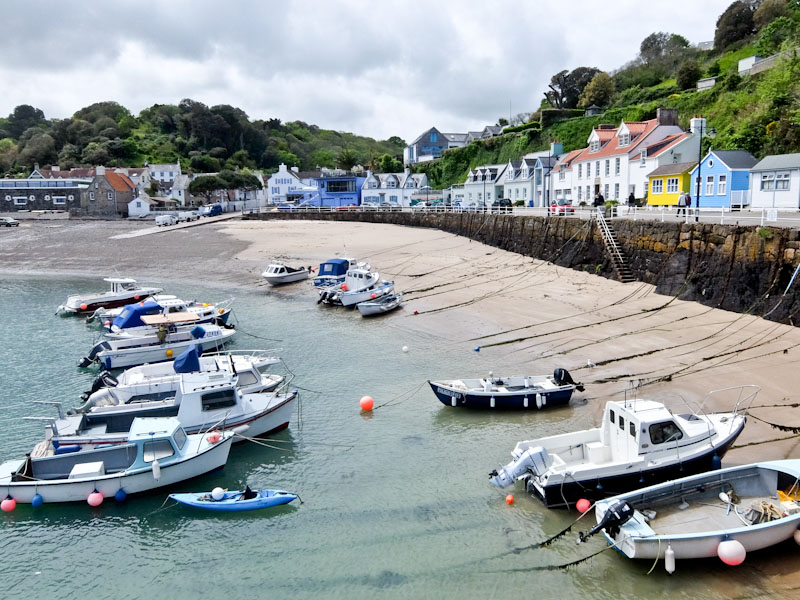
I’m now homeward bound, turning west and passing through the village of Grouville before arriving back in St. Helier. It’s taken me most of the day, cycled 50 miles and without the bonus of an e-bike it would have been tough. In fact, toward the end it’s looking like the battery is about to give out, but I just about make it back.
Jersey Zoo
Keeping to the environmental theme, I’m keen to visit Jersey Zoo, home to the Durrell Wildlife Conservation Trust. For over 60 years they’ve been working to not only prevent extinctions but recover populations of threatened species and drive the rewilding of ecosystems. Following the signed cycle routes 4 and 3 into the centre of the island, I’m soon at the entrance, near the village of Trinity.
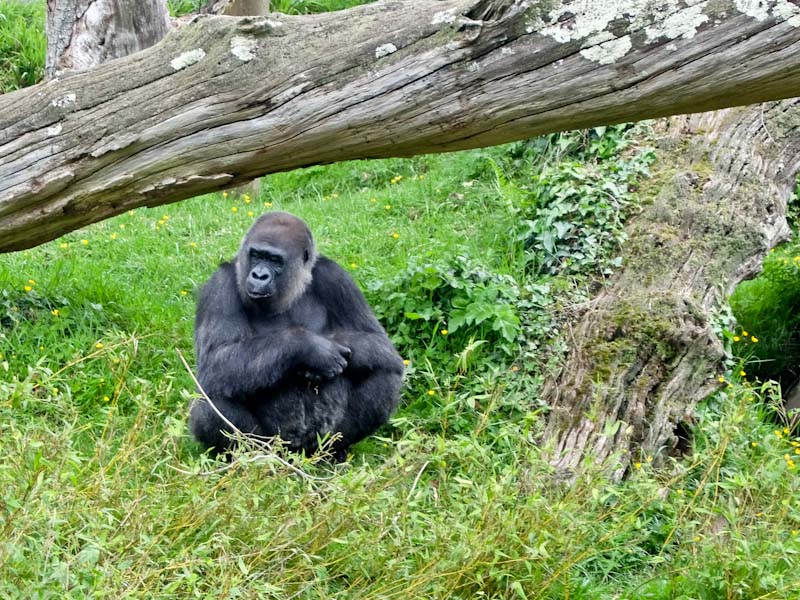
It’s home to 1,400 mammals, birds, reptiles and amphibians and over 130 endangered species. Sumatran orang-utans, Andean bears and Montserrat orioles, rescued from beneath the smouldering volcano, live in lush, spacious environments which closely replicate their native habitats. Madagascar lemurs and tiny lion tamarinds from Brazil roam free in woodland, leaping through the trees.
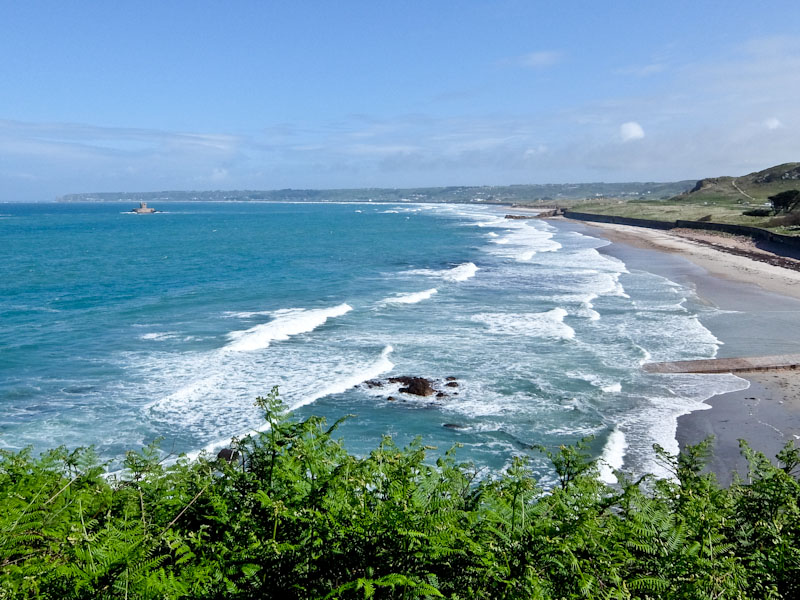
On the way back, I travel west following Route 3 to reach the coast at St. Ouen’s Bay and then follow my coastal route of yesterday in the other direction. Back in St. Helier, there’s just enough time to take the amphibious ride to Elizabeth Castle in the bay. It dates from the 16th century, built to replace the defences at Mont Orgueil and named after Elizabeth 1. The tide’s out after my visit so I walk back along the causeway to St Helier.
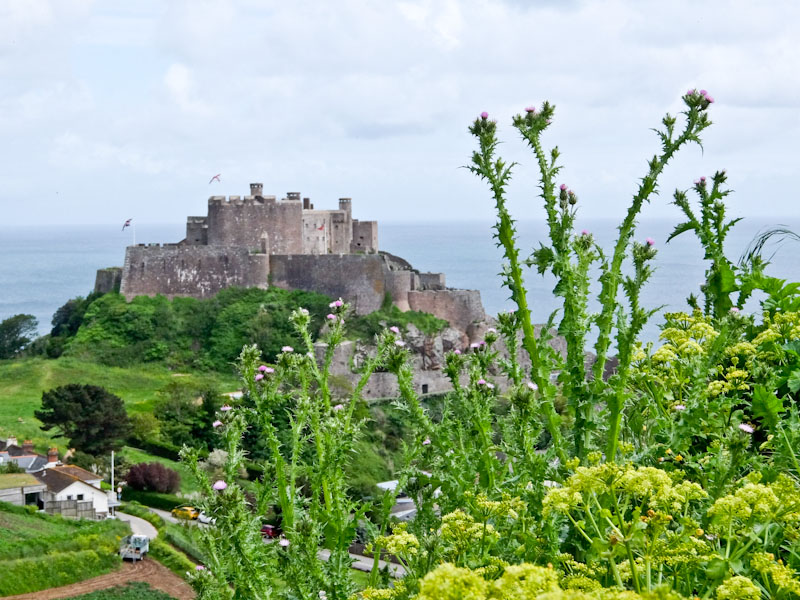
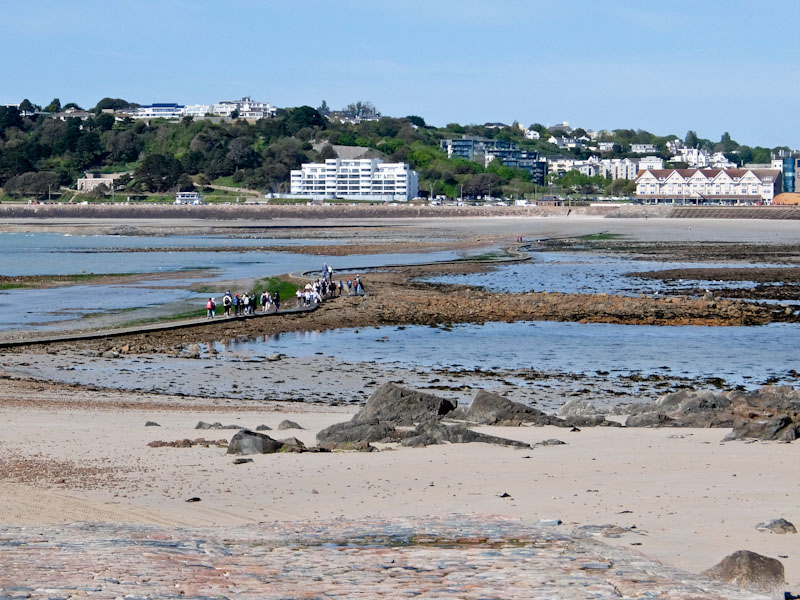
Jersey takes the environment seriously. They say they’re constantly looking to develop more ways to live sustainably and in harmony with their island environment. They have the grand ambition to be a carbon-neutral island by 2030. Even more reason perhaps to take a sustainable trip to Jersey. They encourage you to collect the plastic and rubbish from the beaches and you can exchange a full bucket for a free hot drink.
I’m too busy cycling around the island to do my bit, but from what I can see, the beaches are remarkably clean, as are the Green Lanes. The network of cycle routes works well, although occasionally signs are obscured by foliage and easy to miss. Even though the island is only five miles long and nine miles wide, it’s not exactly flat and after a few days my legs feel like they’ve had a good workout. This sustainable trip to Jersey has certainly improved my fitness level and, even better, reduced my carbon footprint.
Tell me more about this sustainable trip to Jersey
Condor Ferries operates Condor Liberation, a trimaran that takes around four hours to and from Poole. They also offer various package holidays with Condor Breaks.
Lakeys Bike Hire Jersey in St Helier offers a range of bikes including state-of-the-art e-bikes.
The 4* Hotel de France, in St. Helier, offers an extensive choice of facilities including a luxurious Ayush Wellbeing Spa and Healthhaus fitness centre.
The Biarritz Hotel, overlooking St. Brelade’s Bay, has excellent sea views and good food.
Visit Jersey has plenty of sustainable information about the island and the Green Lanes.

